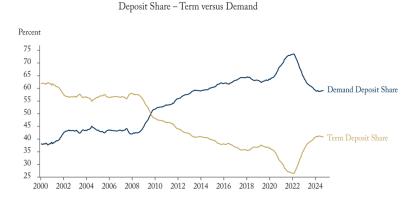The pandemic has kicked Canadian government debt to high levels. Federal and provincial budget plans could well see it go higher for decades and even generations. Furthermore, Canada’s future fiscal prospects are highly sensitive to small changes in assumptions regarding economic growth and interest rates.
We calculated a baseline scenario showing an upward long-run drift with the debt ratio reaching 60 percent by 2055. Sensitivity analysis reveals small adjustments to productivity and hours worked, leading to small differences in average nominal GDP growth, can dramatically change the course of the debt burden, as illustrated in the figure above.
In two of three more favourable alternative scenarios, the fiscal hit from the pandemic is locked in and passed forward not just one, but two generations. Our most favourable scenario (assuming productivity growth and no reduction in hours worked) projects a declining trajectory for the burden, but the debt-to-GDP ratio declines only to 41 percent.
Finance Canada’s long term growth assumptions embodied in the “Budget Scenario” forecast are possible but optimistic, given the amount of uncertainty involved. Plans based on overly optimistic scenarios put the country at risk and less optimistic alternatives should be considered in deliberating upon policy.
To learn more about our projections and policy recommendations, read “Rolling the Dice on Canada’s Fiscal Future”, by Alexandre Laurin and Don Drummond.





